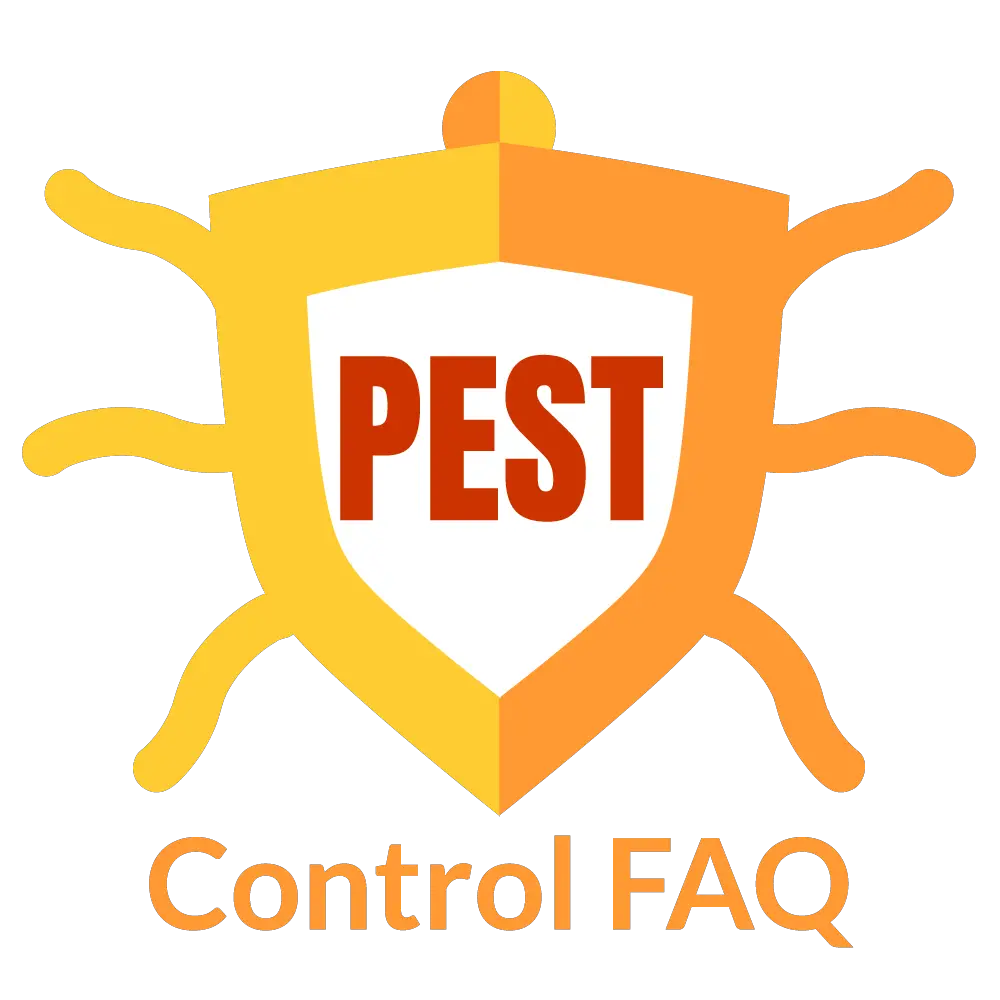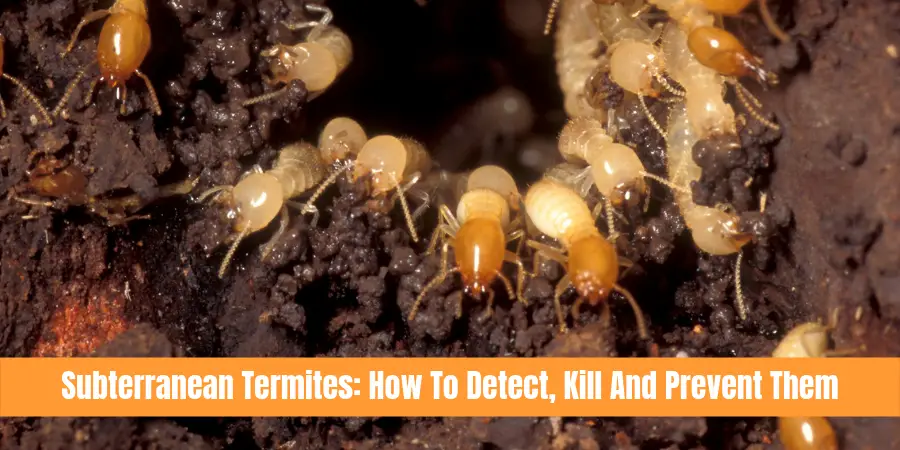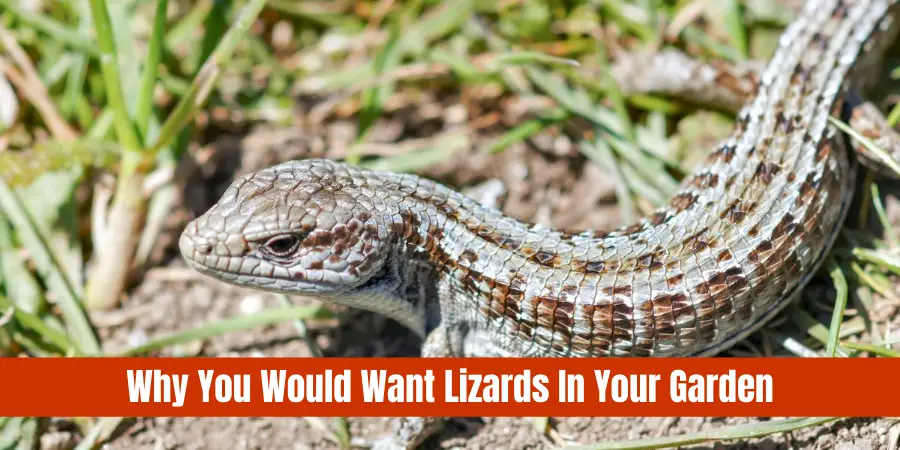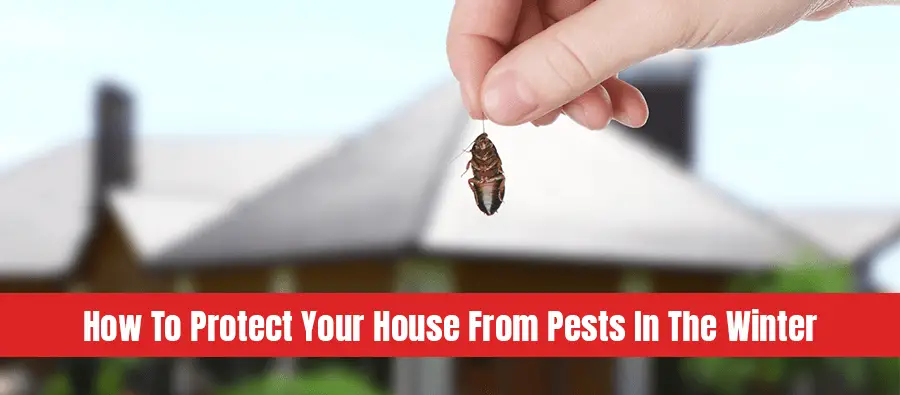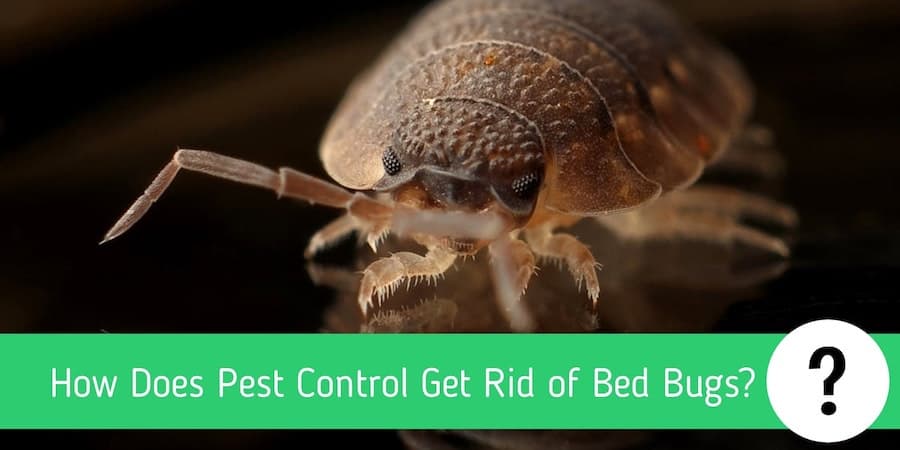Termites are the scourge of homeowners. Their appearance seems to come out of nowhere, and the damage they cause is costly and time-consuming to fix, but if you know how to detect, kill, and prevent them, then you may be able to save yourself some headaches.
How to detect, kill, and prevent subterranean termites? To handle or prevent a termite problem you will first need to look for signs of termites in your home like the appearance of mud tunnels, swarmers flying near your lights, or piles of wings in your home. You can prevent termites by using liquid barriers or removing sources of food and water. If you find termites in your home, you can use boric acid, chemical treatments, and other methods to kill them.
This is just the tip of the iceberg when it comes to keeping your home termite-free. Continue reading to find out everything you need to know about termites and how to avoid them becoming a problem in your home or on your property.
Table of Contents
Termite Detection
The first step in dealing with termites is learning how to detect their presence in your home. Early detection can save you a lot of time and money, so make sure you keep an eye out for these signs of termites.
- You may see mud-like materials lining certain parts of the house that has an irregular pattern, much like a tube made of mud.
- When termites excavate the wood on your property, they usually only leave a thin layer of wood on the outside surface. This will eventually break as the structural integrity of the wood becomes compromised. Termites seal these holes with a mud-like substance that is a mix of soil, saliva, and feces. Yuck!
- When most termites are in their “reproductive” stage of development, they have wings, but as they develop, they shed these wings. If you find piles of insect wings around your home or property, you probably have termites.
- Obviously, if you see termites on your property, then you have termites. Termites can look different depending on the species, their stage of development, or their role in the colony. Termites are ant-like. They have six legs, narrow bodies, and can be found with wings and without.
- How to tell a termite from an ant? Termites have straight antennae, equal-length wings, and a straight waist. Ants have bent antennae, unequal length wings, and a pinched waist.
- Wood that is damaged or sounds hollow when you tap it with a hammer is also a sign that you have termite damage.
- Peeling or bubbling paint can also be a sign of termite damage. This is because termites bring water into their colonies.
Inspecting for Termites in Your House
Now that you know the signs to look for, you can go inspect your home and other areas of your property including gazebos, woodpiles, and sheds.
What you will need:
- Good flashlight
- Screwdriver or pocket knife
- Coveralls
What to investigate:
- You will need to look closely at common trouble spots, which may include getting in crawl spaces and looking for wings, exposed tubes, and damaged wood.
- Probe the damaged wood with a screwdriver, knife, or even a stick.
- Inspect the interior and exterior surfaces of the foundation, especially where wood is closest to the soil.
- Start looking in the basement or closest to ground level, and use a bright flashlight.
- Inspect any wood construction located in the basement or crawl space.
- Look at all subfloors, joists, support posts, basement windows, frames, wood under the porches, and supporting piers.
- Look closely at concrete where steps, porches, and slabs connect with wood structures. Wood that is in contact with concrete tends to be moister and can attract moisture-loving termites.
- Inspect all hollow blocks, expansion joints, brick construction, and cracks in the cement.
- Check any wood that is on the exterior, including old tree stumps, basement windows, fence posts, and exterior frames.
Termites will usually be around the ground level, but in warmer areas of the country, they can occur above the first floor.
A Little More About Mud Tunnels
The headquarters of subterranean termites are held in “mud tubes” these are pencil-sized networks that connect the colony which adds moisture to the food which is usually wood.
The tunnels contain fecal matter mixed with mud particles. While these mud tunnels are a sure sign of termites, it doesn’t mean you are free of termites if you don’t see them.
Mud tunnels can be useful for determining if a termite colony is active. Break open a tube and use a flashlight to see if there are termites crawling through it. Even if you don’t see any, check back because termites will repair damaged tubes. Old, inactive tubes will be dry and will crumble very easily.
Whether the tubes are active or abandoned, it doesn’t matter. Termites once were there. If they moved on, it was probably just to a different part of your home.
Subterranean termites build four different types of tubes.
- Working tubes: are built from nests in the soil to wooden structures to feed off of.
- Exploratory tubes: come from the soil but don’t connect to any wooden structures.
- Drop tubes: branch out from wooden structures and go back to the soil
- Swarm Castles or swarm tubes: These tubes are made to accommodate the swarmers as they prepare to leave the colony during a swarm. These structures which can reach up to 4 feet wide give the swarmers protection.
Subterranean Termites
Make sure the termites you have are in fact subterranean, these types of termites feed off of the cellulose in wood and they tend to infiltrate through the points where wood contacts soil.
Termites are divided into three categories:
- Drywood
- Subterranean
- Dampwood
There are three “castes” within a subterranean termite colony.
- Alates: (known as swarmers) have a dark brown or black color and are as long as a quarter to a half of an inch. They develop two pairs of wings that are about equal in length
- Workers: They don’t have wings, are about a quarter of an inch long and are colored white, or cream.
- Soldiers: Wingless, and have large mandibles or jaws. These termites are the defenders of the colony from enemies such as ants and can be distinguished through their creamy torso brown head and large jaws.
Swarmers
Swarmers are termites that have wings. These are termites in their reproductive stage, and they are one of the most common termites you will see because they do not stay in their colony. If you encounter swarmers, then it means there is a nest nearby.
Most of the time, when you spot swarmers it will be on a warm day just after a rain. If the swarmers are found outside, it does not mean your house is infested because they may just be living outside. Still, precautionary measures should be taken, and you should inspect your home thoroughly for signs of infestation.
If you have them inside, you will absolutely notice them as they come in big numbers, and it is a sure sign that you have an infestation in your home.
Remember, swarmers, and flying ants can look similar, but they have different physical features that will help you distinguish them if you look closely. END
How to Kill Termites
Once the termites are spotted, it is crucial that they are disposed of quickly and safely so that they don’t cause any more damage.
Fortunately, the damage caused by termites happens slowly. Termites can cause serious damage, but if you’ve been vigilant about detecting them, and you catch them early, you probably won’t experience large scale damage. Early detection is key.
If you find termites have decided to make your home their home, here are some measures you can take to get rid of them.
Liquid Barriers (Termiticide Suspended Concentrate)
This liquid barrier method is a chemical spray that is used around the outside of your home to manage termites. It is not always used for active infestations, but it will poison termites when they come in contact with the undetectable solution.
Some liquid barriers act as a repellant, but with this termiticide, it doesn’t repel at all. Termites cannot even detect it.
Like most pest control poisons, the termite will not die immediately upon ingesting the poison. Instead, it will return to its colony, where it spreads the poison to the colony.
How to use:
- Mix 0.8oz of Termidor into 1 gallon of water.
- Dig a deep trench 6 by 6 inches around your home’s foundation. Concrete homes will need a half-inch by 18-inch hole that is about 2 inches from the foundational wall at intervals of one hole every foot.
- Use a sprayer to spray the Termidor into the trench at a rate of 4 gallons every 10 feet.
This process is highly effective and allows the solution to bond with the soil, lasting as long as ten years.
It is possible to skip the digging and jump right into spraying the Termidor onto the foundation, but it is much less effective than trenching.
If this doesn’t sound like the way you want to spend your weekend, call a professional who will do it quickly, effectively, and safely.
Termite Baiting
Termite colonies are usually massive in population, and using only soil termiticide will have limited effects on the colony.
Baiting is becoming an ever more popular method in getting rid of an infestation. This will also help with deterring future termites and increase your protection long term.
Baits consist of slow-acting insecticides that are made attractive to termites. Like termiticide, the termite will ingest the bait and then carry it back to the colony where it can spread the poison.
Some baits will use Growth Regulators (IGRs) which have yielded great results in culling and even annihilating the populations of termite colonies.
IGRs also have very low toxicity levels for pets and humans; however, the most effective IGRs are only available to professional exterminators.
Bait Termites for Detection
By setting up these traps outside, you can check to see if there are even any subterranean termites within your area.
Place some untreated wood into plastic bait traps and put these into the ground around your house at 10-foot intervals, this will flush out nearby termites.
If the bait is eaten, then you will know there are termites around to eat it. The speed with which it is consumed could give you some information about the extent of their presence. This does not necessarily mean there are termites in your home, but it would mean they are nearby.
Baiting with Stakes
You can purchase baiting stakes online that you will then install around the perimeter of our house.
The nifty thing about the stakes is that checking them is super easy. The stakes will pop up out of the ground once the bait is consumed. They are essentially a self-checking termite detection system as well.
- First figure out how many stakes you will need to place around your property, normally it’s about 10-20 stakes.
- It’s recommended that you draw out your property on graph paper to help decipher which areas are most suspect for termite activity.
- An auger is provided to help install the stakes at your chosen locations around your property. The stakes must be placed 2 to 3 feet away from the house’s foundation and about 10 feet apart.
- Check back often to see if the bait has been eaten and if termites are trapped in the stake.
- Activated stakes should be replaced and new ones put in its vicinity since it’s a high traffic area.
- Every 12 months, all stakes should be replaced or removed because they become ineffective.
Bait Traps to Tackle an Infestation Inside
There are above ground baiting stations that can be used to bait termite colonies that have established themselves within your house.
Place these poisoned bait traps at areas where you know there are high levels of termite activity like a mud tube, or damaged wood.
Make sure that no directions on the baiting systems are contradicted because some can work on their own or others have a liquid spot-treatment.
The Process of Fumigation
Termite fumigation is an intense process and can only be done by professionals. The entire home is enclosed in a large tent, and gas is released into the tent. The benefit of this method is that it can reach all those hard to access places where termites might be hiding.
The whole process usually takes three to five days. Two types of poisons are used to kill the termites; One is a stomach poison, and the other is a special hormone that prevents termites from regrowing their cuticle after they molt.
This works out especially well since the termites will eat the remains of their dead comrades and continue spreading the poison.
Even after tenting and fumigation, there may be another flare-up in termites because the procedure doesn’t eliminate the eggs.
This method is for a much more severe case of termite infestation, fumigation can treat every part of the house, including its structure in one action. Typically this is the recommended solution if multiple colonies have been discovered in the structure.
You will need to take special precautions to be prepared, make sure all food is removed or sealed and all the furniture is covered with tarps to keep the fabric fresh. The fumigators should take care of everything else and let you know what else you can do to improve the process.
Boric Acid
Many consider boric acid one of the best in-between solutions when it comes to natural solutions and pesticides. Boric acid affects the metabolic and digestive systems of termites and many other insects killing them 3-7 days after making contact.
While this method is natural, it is still toxic. For this reason, it is not recommended to be used around small children and pets.
Put the acid in a powder duster and apply to any high traffic areas, you can use boric acid inside and outside. If you find the whole colony, apply the boric acid directly into it.
Beneficial Nematodes
Beneficial nematodes are one of the most natural ways to get rid of termites. A very natural method, chemicals are not required in this technique, but for what nematodes have in safety and naturalness, they lack effectiveness. Chemicals and pesticides are extremely effective, beneficial nematodes, not so much.
This is a great fix for those with a minor termite problem and who aren’t looking to shake things up too much.
Beneficial nematodes are roundworms of microscopic size that eat harmful insects like termites. These roundworms are 100% safe and have absolutely no effect on humans. There are species of parasitic nematodes are known to infect humans, but these are not a part of them.
To top it off these worms don’t even attack earthworms or ladybugs who are more beneficial insects.
The way these roundworms work is that when they make contact with the termites, they immediately invade the body and begin feeding.
The nematodes start to release gut bacteria that poisons the blood of its host and kills it. Once the host is completely consumed, it moves on, breeding the whole time.
How to use beneficial nematodes:
- Add one cup of cold water to the container and let this mixture sit for 30 minutes at room temperature.
- Get 5 quarts of potting soil, peat moss, or vermiculite moistened with 2 quarts of water
- Mix these two products together and add another half cup of water once it’s mixed.
- Stir gently until all the contents are distributed evenly
- Apply this solution near all the infested areas inside and outside of the home. Make sure the soil is moist, and it is preferably nighttime because the nematodes are wary of sunlight and heat.
- If you are fertilizing outside in these areas, then don’t add any fertilizer until at least 2 weeks after the nematodes are applied because it will have negative ramifications.
Diatomaceous Earth
This method uses the tiny aquatic organisms known as diatoms that result from fossilized remains. The bodies are made up of silica, and they tend to appear in rivers, oceans, and lake beds.
This method is the top choice for natural pest control and is 100% non-toxic.
The molecular structure of diatomaceous earth is similar to tiny razor blades when insects come into contact. It will slice them apart and leave them dehydrated while they eventually die.
To use:
- Fill a powder duster with the product
- Form barrier areas around exposed wood and insulation around the basement and other warm humid places can also be put directly in the soil
- If put outside it will need to be reapplied every time it rains or every few days in humid climates.
Direct Chemical Treatments
This method is very effective for the inside of the home since some poisoned bait, and liquid barrier treatments are discouraged from inside use due to the poison transference effect.
This method involves Termidor Foam, and it allows you to foam any termite you see within the in the attic, rafters, or any crevices.
Termidor foam is the most popular foam used in the industry, and it isn’t a spray. Sprays aren’t that useful against termites because they rarely let themselves get exposed enough to be sprayed.
This foam will expand up to 30 times its size once it leaves the can. Foams like these allow you to reach termites that are hiding in the hardest to reach places.
This solution doesn’t just block off termite’s paths, but it will eventually dissolve into an invisible poisonous residue that will kill off termites. The foam is odorless, lasts for up to one month and is made specifically for indoor treatment.
How to Prevent Termites
There are many good ways to prevent a termite problem from starting in the first place. By combining prevention with detection methods, you should be able to avoid the worst of termite issues even if they are a common problem in your area.
- Treating with Chemicals: Using chemical barriers around your home and other structures on your property will effectively prevent a termite problem before it starts. This does require maintenance, but it is worth it, especially if you’ve experienced termite infestations in the past.
- Liquid Chemicals on the Wood: You can spay termiticide onto the surface of the wood to keep subterranean termites from eating their way through it.
- Do a post-construction treatment: Drill holes through the slabs and inject the insecticide under the foundation.
- Woodpiles: If possible, keep your woodpile a good distance from your home.
- Repair damages: Repair any damages to your home swiftly so as not to give termites an easy way in.
- Water: Termites need water. They will be attracted to areas that have a water source. So, if your outdoor spigot leaks, or an area around your home puddles, you should consider fixing these issues.
- Mulch: Because mulch retains water in the ground, it can sometimes help attract termites. Mulch is great for your garden, but even treated mulch could attract termites or other unwanted insects.
- Ventilation: Termites love warm, humid air. If there is a part of your home that tends to be warm and humid, you should consider adding ventilation.
- Hire a professional: If you feel any uncertainty, consider hiring a professional or seek their advice, so you don’t damage your home in the process.
Contacting an Expert
There are some pest issues that can be easily handled by homeowners, but termites are one that it can be very beneficial to hire an expert for. If left uncontrolled, or improperly controlled, termites can cause some very serious and expensive damages to your home.
The best methods for getting rid of termites are only accessible to pest control professionals. Fumigation, for example, can only be done by a pest control professional and certain chemicals are hard or impossible to locate.
In addition, by hiring a pest control expert, you can be sure that the problem is being taken care of. Experts deal with termites all the time. They know the signs, and they know exactly how to treat them.
Many pest control companies also offer plans where they will regularly come and check your property for signs of termites or other pest issues. This is the best because you can “set it and forget it.” All your pest control detection will be handled without you even having to think about it.
While detection and prevention will take you a long way, if you have a termite infestation in your home, or if you have recently had one, the best thing you can do is hire a pest control expert to handle the problem. They will ensure the job is done right and thoroughly so that you can sleep easy at night.
